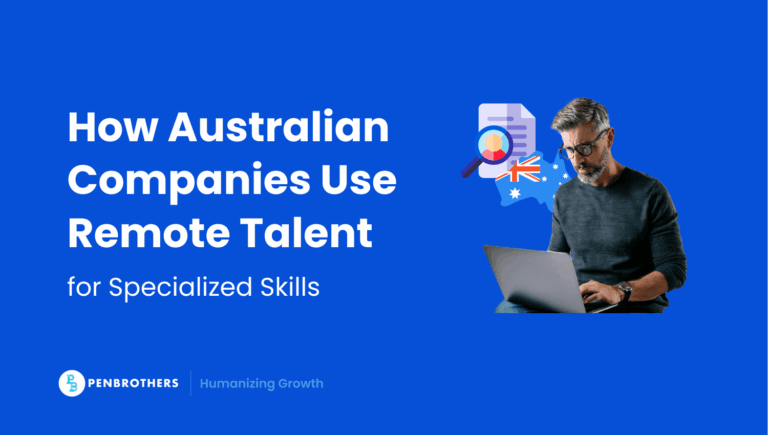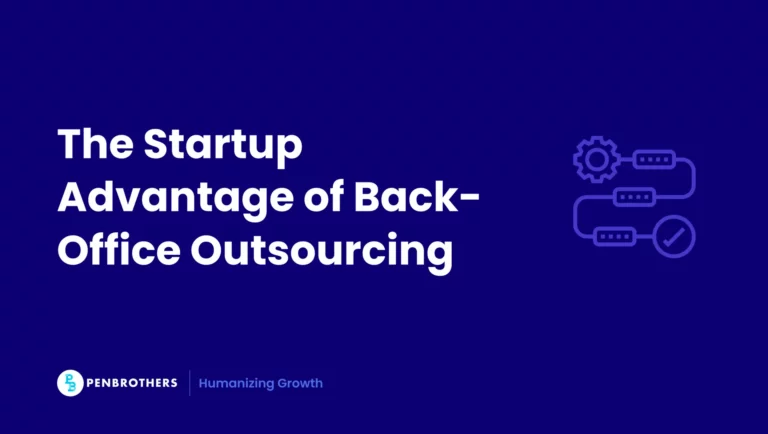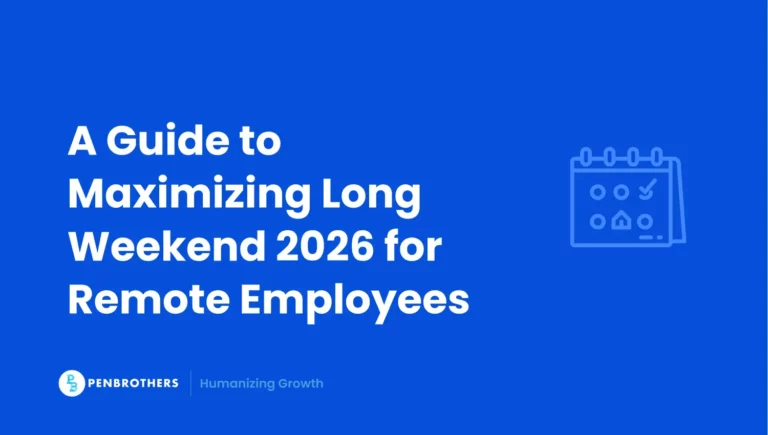The UK technology sector is facing a critical bottleneck: 93% of UK employers report an IT skills gap, leaving them unable to find the technical talent they need. The stakes are high, with the public sector alone estimating that £45 billion in potential productivity gains are sitting on the table, waiting for systems to be modernized.
IR35 made things more complicated. By reshaping how contingent labour can be engaged, it pushed organizations away from the familiar comfort of direct contracting toward something that feels more structured, more compliant, and frankly, more expensive: staff augmentation models where someone else becomes the employer of record.
So here we are. The old ways don’t work anymore, the new ways cost more, and the skills you need are harder to find. IT staff augmentation has moved from tactical stopgap to strategic necessity.
Key Takeaways
- A Strategic Necessity for UK Tech Talent: IT staff augmentation has evolved from a temporary fix to a strategic necessity for UK businesses facing a critical digital skills gap (93% of employers report shortages). It is the most viable way to access specialized talent in areas like cybersecurity, AI, and software development that are scarce domestically.
- Control and Compliance are the Key Differentiators: Unlike traditional outsourcing where control is relinquished, staff augmentation allows you to retain full management control over the external team. Crucially, when managed through a vendor (Employer of Record), this model solves the major UK compliance headache of IR35, as the vendor assumes the tax liability.
- Cost Structures have Changed, but the Model Still Works: While costs for permanent hiring have risen due to recruitment fees and increased National Insurance, staff augmentation remains financially attractive. It offers flexibility to scale down quickly without redundancy costs and provides access to offshore talent at savings of 60-70%.
- Three Geographic Tiers Offer Different Benefits: UK businesses must choose the right sourcing model. Onshore (UK) is best for security-cleared roles but is expensive. Nearshore (Eastern Europe) offers a balance of cost and time zone alignment. Offshore (Asia/LatAm) provides the greatest cost savings and scale for large teams, but requires careful management of time zones and culture.
What IT Staff Augmentation Actually Means in the UK
Globally, people use “staff augmentation” and “outsourcing” interchangeably. In the UK, that confusion can cost you.
Staff augmentation is when you bring in external people to supplement your internal team. The crucial detail: you manage them. You direct their work. You tell them what to do, when to do it, and how it should be done. They use your systems, follow your processes, sit in your Slack channels or Teams meetings. For all practical purposes, they function as your employees. Except they’re not. They’re on someone else’s payroll—the vendor’s.
This distinction matters because of how UK tax law works. Under the Off-Payroll Working Rules (IR35), the degree of supervision, direction, and control you exercise is what determines employment status. Staff augmentation, by its nature, involves high control. Which means if these were direct contractors, IR35 would almost certainly apply. The vendor employing the staff directly solves this problem. They deduct PAYE at source. You pay a B2B invoice. HMRC stays quiet.
Compare this to managed services, where you buy an outcome, you don’t manage the team delivering it—the vendor does. Or compare it to project outsourcing, where you hand over a deliverable and the vendor owns getting it done. Those models transfer risk, while staff augmentation keeps the risk with you but gives you control.
The Evolution from “Body Shopping” to Strategic Capability
Ten years ago, staff augmentation meant pulling the emergency lever when a project fell behind. Someone left. Someone got sick. You needed bodies in seats, fast.
That narrative has inverted. Look at how UK Fintech companies build their engineering organizations now. They keep a core team—the people who own architecture, who hold institutional knowledge, who understand why the system works the way it does. Then they surround that core with a flexible ring of augmented talent that expands when they’re scaling and contracts when they’re consolidating.
This “Core plus Flex” model works because the economics of permanent hiring have changed. The cost isn’t just salary anymore. Recruitment fees run 15 to 25 percent. Employer National Insurance rose to 15% in April 2025. Then there’s pension, equipment, training, and the hardest cost to quantify: redundancy risk if things don’t work out. Staff augmentation shifts most of that to someone else’s books. You pay more per day, but you can scale down with 30 days’ notice instead of navigating redundancy processes.
Differentiation from Adjacent Models
Augmentation vs. Managed Services (MSP)
The line between augmentation and managed services gets blurry because vendors like offering hybrid solutions. Contractually, though, the difference is clear.
In a managed service, you buy a service level. A UK bank might engage an MSP to run its cybersecurity operations centre. The bank doesn’t interview the analysts. The bank holds the vendor accountable for detecting threats within 15 minutes. That’s an outcome. The vendor owns the risk.
In staff augmentation, the bank brings in five cybersecurity analysts to work under the bank’s CISO. The bank conducts the interviews. The bank assigns the work. If the analysts underperform, that’s the bank’s problem to manage. The risk stays with you, but so does control.
Augmentation vs. Statement of Work (SOW)
Statement of Work engagements have made a comeback as a way to structure contracts “Outside IR35.” In a real SOW, a vendor delivers a defined asset for a fixed price. Build a mobile app. Migrate this database. The vendor manages the team and absorbs the financial risk if things run over.
The problem is sham SOWs. Contracts get labeled as deliverables-based, but the actual work is time-and-materials labour supply. You’re directing the day-to-day work. You’re managing the resources. That’s augmentation, not a project. HMRC knows this, and if they audit you, they’ll look at what actually happened, not what the contract said. Staff augmentation at least has the honesty of calling it what it is.
Augmentation vs. Direct Contracting (PSC)
Before 2021, UK firms relied heavily on independent contractors operating through Personal Service Companies. IR35 reforms broke that model for large enterprises. The tax liability shifted to the hiring client, and suddenly you had to make individual status determinations for every contractor. Most large firms decided that was too much administrative burden and too much risk. They wanted out.
That vacuum is what staff augmentation now fills. One vendor. One contract. One invoice. The vendor employs everyone, handles all the tax, and you get what you needed: experienced professionals working on your team without the compliance headache.
Related article: Top 8 IT Staff Augmentation Companies for 2025
The UK IT Staff Augmentation Market: Size, Demand, and What’s Driving Growth
Market Scale and Growth Trajectory
The global IT staff augmentation market is projected to reach $857.2 billion by 2031, growing at 13.2% annually. In the UK, the broader IT outsourcing sector was valued at approximately £28.7 billion in 2024. Staff augmentation is the fastest-growing segment within that.
Growth isn’t uniform, though. It’s being driven by specific pressures. PA Consulting found that 63% of UK organisations plan to maintain or increase outsourcing spend over the next year. This bullish outlook persists despite—or perhaps because of—economic uncertainty. When growth is stagnant and interest rates are high, CFOs scrutinize CapEx-heavy permanent hiring. OpEx-based augmentation starts looking more sensible.
The Digital Skills Crisis as Primary Driver
The engine powering UK staff augmentation is the gap between what companies need and what they can hire. This isn’t a minor recruitment challenge. It’s structural.
The Recruitment and Employment Confederation’s data shows persistent shortages across 25 technology skill sets. Cybersecurity tops the list, followed by software development and automation testing.
Brexit also changed the talent equation. In the past, UK tech firms could easily tap the EU talent pool to fill mid-level engineering roles. Now, the bureaucratic friction of visa sponsorship—despite the Global Talent Visa route—makes bringing talent into the UK less attractive than accessing it remotely via offshore augmentation.
Then there’s public sector demand. The government’s efficiency reviews identified that outdated technology costs £45 billion annually in lost productivity. The urgency to modernize is creating massive pull for digital skills, tightening supply further for private sector buyers. The government’s “Digital Outcomes and Specialists” framework institutionalizes staff augmentation within public procurement, making it standard practice rather than exception.
Contractor Market Sentiment and Availability
The contractor market—the traditional source of augmented talent—has been volatile.
REC data from September 2025 showed an IT contractor demand index of 43.7. Below 50 means contraction compared to the previous month. This follows severe correction in 2023 and 2024 after the pandemic hiring spree. Yet 36% of employers stated they planned to hire additional contract talent to manage workload without committing to permanent headcount.
What we’re seeing is professionalization. Individual freelancers are being replaced by professional contractors supplied through agencies or vendors. This is IR35’s legacy. The market is consolidating, the gig element is fading, and corporate augmentation partnerships are taking over.
Regional Dynamics: London vs. The Regions
London dominates for high-value work—architecture, leadership, fintech roles. Median day rates for Java developers in London hit £575. But cost pressures are driving demand outside the capital.
The North of England and Scotland are seeing growth. Java roles in the North command median rates around £473, noticeably lower than the national average. Staff augmentation vendors are setting up regional hubs to offer UK-based talent at a discount to London rates. It’s effectively “nearshore UK”—same country, same time zone, lower cost.
The Regulatory Reality: IR35, GDPR, and How IT Staff Augmentation Stays Compliant
The Long Shadow of IR35 (Off-Payroll Working)
The Off-Payroll Working Rules remain the dominant force shaping the UK contingent labour market. The April 2021 reforms shifted tax status responsibility from contractor to client. That shifted risk, too.
The Mechanism of Liability
If you engage a contractor directly and determine they’re “Outside IR35″—self-employed for tax purposes—but HMRC later challenges that determination and wins, you’re liable for all unpaid PAYE tax and National Insurance, plus interest and penalties. This liability risk prompted banks and large enterprises to ban PSC contractors outright in 2021.
Augmentation as the Compliance Solution
IT staff augmentation vendors adapted by offering “IR35-proof” models. The augmented staff are employees of the vendor or an umbrella company in the vendor’s chain. The vendor pays via PAYE, deducting tax at source. You receive a simple B2B invoice for services rendered.
The strategic benefit: you don’t need to assess employment status because the worker is already taxed as an employee. The cost implication: it’s more expensive than the old PSC model. Employer National Insurance (15%) and Apprenticeship Levy (0.5%) must be absorbed. But most clients view this premium as reasonable insurance against compliance risk.
GDPR and Data Sovereignty in Offshore Models
IR35 governs the people. GDPR governs what they touch. Post-Brexit, the UK has its own implementation (UK GDPR), but principles remain aligned with the EU.
Engaging offshore staff—in India or the Philippines, for instance—means granting access to data. If that data includes Personal Identifiable Information of UK citizens, you’re making a restricted data transfer under GDPR.
Compliant vendors now use Virtual Desktop Infrastructure solutions. Citrix. Amazon WorkSpaces. The offshore developer works on a virtual machine hosted in a UK data centre. Data never physically leaves UK jurisdiction, only screen pixels stream to the offshore location. This architectural pattern has become standard for financial services and public sector augmentation.
Employment Law and the “Employment Rights Bill”
Changes in the Autumn Budget 2025 and the Employment Rights Bill have added new variables. The focus on worker rights is making permanent employment more rigid and costly—day-one rights being the headline change.
This rigidity acts as a disincentive for permanent hiring, especially for project-based work. Employers are hesitant to add permanent headcount that’s difficult to reduce if conditions change. So, staff augmentation offers an alternative: workforce that can scale down with notice periods often as short as 30 days, with the vendor handling redundancy or redeployment.
IT Staff Augmentation Models: Onshore, Nearshore, and Offshore Options
Where you source your augmented staff determines both cost and capability. The UK market uses a three-tier geographic model.
Tier 1: Onshore (UK-Based) Augmentation
Definition: Resources physically located within the UK.
Vendor types: High-end consultancies like Bjss and Opencast, specialized staffing firms such as Hays and Robert Walters, and boutique agencies.
Cost profile: Highest tier. A senior Java developer commands around £575 per day. Agency markups add another 15 to 30%.
Use cases:
- Security-cleared roles: Public sector projects involving national security—MoD, Home Office—typically require SC or DV clearance, which necessitates UK residency.
- Leadership and architecture: Roles requiring high-bandwidth stakeholder management. Product Owners. Enterprise Architects. These rarely get offshored.
- Regulatory proximity: Roles demanding deep knowledge of UK-specific regulation, like open banking standards or FCA requirements.
Tier 2: Nearshore (Eastern Europe)
Definition: Resources in time zones compatible with the UK—GMT+1 to GMT+3.
Primary hubs: Poland, Romania, Bulgaria, Czech Republic. Increasingly, Ukraine, despite ongoing conflict risks.
Cost profile: Moderate. Savings of 30 to 50% compared to UK rates. Hourly rates typically range from $35 to $70 (£27 to £54).
Strategic advantages:
- Cultural alignment: Work cultures in Central and Eastern Europe mirror Western Europe. Direct communication. High autonomy. Minimal cultural friction.
- Engineering quality: The region is known for strong STEM education. Many developers hold Master’s degrees.
- Agile compatibility: The one to two-hour time difference allows full working day overlap, making real-time Agile ceremonies—stand-ups, retrospectives—seamless.
Risks: Wage inflation in hubs like Warsaw and Krakow is eroding cost advantages. Geopolitical instability remains a concern for risk committees evaluating vendor resilience.
Tier 3: Offshore (Asia and Latin America)
Definition: Resources in distant time zones.
Primary hubs: India, the Philippines, Vietnam in Asia. Brazil, Argentina, Mexico in Latin America.
Cost profile: Lowest. Savings of 60 to 70%. Hourly rates as low as $20 to $35 (£15 to £27).
Strategic advantages:
- Scale: India alone produces millions of STEM graduates annually. For large requirements—50 Java testers next month—offshore is often the only viable option.
- 24/7 operations: “Follow-the-sun” models allow development to continue while the UK sleeps, accelerating testing and deployment cycles.
- Latin America rising: LatAm is emerging as a competitor to Asia. For UK clients, the time zone (GMT-3 to -5) offers afternoon overlap, better than the early morning window with Asia.
Risks: High attrition rates, often exceeding 20%. Communication challenges. Time zone management fatigue for UK managers who end up working split shifts to maintain overlap.
The Rise of Public Sector Frameworks
The UK public sector has structured its augmentation market through frameworks designed to ensure compliance and value for money.
- Digital Outcomes and Specialists (DOS): Now in its seventh iteration, DOS allows public bodies to procure individual specialists or entire teams. It simplifies procurement, enabling contracts to be awarded relatively quickly compared to traditional OJEU tenders.
- NHS Tech Innovation Framework: Specifically for health, supporting primary care digitization. Suppliers are pre-vetted against NHS clinical safety and data standards.
- Digital Workplace Solutions 2: Another route for NHS and public sector IT infrastructure and associated professional services.
Running IT Staff Augmentation Successfully: From Vendor Selection to Performance Management
Sourcing and Vendor Selection
Don’t just compare rate cards. Look at vendor retention rates. High attrition in the vendor’s own team kills project momentum. Implement standardized technical testing—HackerRank, Codility—that all incoming staff must pass regardless of vendor recommendation. This ensures baseline quality.
Onboarding and Cultural Integration
The most successful implementations treat augmented staff as part of one team. They receive corporate email addresses ([email protected]), invites to all-hands meetings (except sensitive financial or HR sessions), and access to the same learning resources as internal staff where feasible.
The buddy system: Assign an internal permanent employee as “buddy” to every augmented starter. This helps navigate unwritten organizational rules—who to ask to unlock a firewall port, which Slack channel to use for infrastructure questions.
Managing Performance and Knowledge Transfer
Agile ceremonies: Augmented staff must attend stand-ups. For offshore teams, timing matters. 9:30 AM UK time works for India and Eastern Europe. It doesn’t work for Latin America or the U.S. West Coast.
Documentation as deliverable: Make documentation review part of the “Definition of Done” in Sprint planning. The biggest risk in augmentation is staff leaving and taking system knowledge with them. Enforce that code gets documented. Contractually, if necessary.
The Future of IT Staff Augmentation in the UK (2025-2030)
AI-Augmented Staffing
By late 2025, the definition of “Senior Developer” includes proficiency with AI coding assistants—Replit, Cursor, similar tools.
Productivity multiplier: Clients will demand higher output from augmented staff. “If you’re using Claude, why is this ticket taking three days?”
AI agents: We’ll see “Agent Augmentation”—vendors providing configured AI agents for tasks like regression testing or log analysis, billed at a fraction of human rates.
The “Superagency” Model
McKinsey’s research on AI in the workplace suggests the future workforce will be smaller but more powerful—each human amplified by AI tools. Staff augmentation vendors will pivot from selling headcount to selling capabilities. A vendor might provide one human architect plus a suite of AI bots to deliver a project.
Post-Brexit Talent Flows and Nearshoring
With the UK government unlikely to restore free movement, friction in hiring EU nationals into the UK will persist. This cements nearshoring as default for European talent access. Expect UK firms to establish legal entities in Poland or Portugal specifically to facilitate easier augmentation—effectively “insourcing” the augmentation model.
Next Steps
For UK decision-makers, the path forward requires nuance. The time of cheap, easy access to talent is over. The winning strategy involves building a strong internal core of architects and product owners, then surrounding them with a flexible, compliant ring of augmented talent sourced from geographies that make sense for your specific needs.
Whether you’re leveraging India’s cost efficiency for testing, Eastern Europe’s engineering strength for development, or UK-based contractors for regulated infrastructure work, success comes down to governance. Treat augmentation as a partnership. Manage culture, compliance, and integration with the same rigor you apply to internal teams.
Need help building an offshore team that actually delivers? Penbrothers excels in IT staff augmentation for UK companies, with particular expertise in handling IR35 compliance, GDPR requirements, and the operational realities of managing distributed teams. If you’re exploring your options or need guidance on structuring your approach, we’re happy to talk through what makes sense for your specific situation.
Frequently Asked Questions
IT staff augmentation is a model where you hire external tech professionals to supplement your internal team. Unlike traditional outsourcing, you manage them directly, integrate them into your workflows, and treat them like your own employees, but they remain on the vendor’s payroll.
IR35 rules make UK companies liable for the tax status of contractors they hire directly. By using a staff augmentation vendor, the vendor employs the staff and handles all PAYE and National Insurance deductions. This means the vendor assumes the employment tax liability, effectively removing the IR35 compliance burden and risk from your company.
Yes, but strict controls are needed. Compliant vendors use Virtual Desktop Infrastructure (VDI) solutions like Citrix or Amazon WorkSpaces. This ensures that the offshore worker accesses a virtual machine hosted in a UK data center, so the data never physically leaves UK jurisdiction, satisfying GDPR requirements.
Onshore (UK) is the most expensive, with senior developers costing around £575/day. Nearshore (Eastern Europe) typically offers savings of 30-50%. Offshore (Asia/LatAm) provides the lowest cost, with savings of 60-70% and hourly rates as low as $20-$35.
AI is expected to shift the model from “headcount” to “capability.” Vendors will increasingly offer “Agent Augmentation,” providing AI agents to handle tasks like testing or log analysis at a fraction of human rates. Human staff will be expected to use AI coding assistants to deliver significantly higher productivity.






